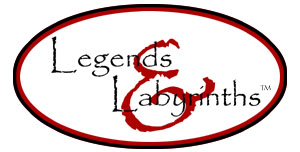I’ve talked quite a bit about how Legends & Labyrinths maintains 100% compatibility with 3rd Edition. This is awesome not only because it unlocks the thousands of 3E adventures and supplements in your L&L campaign, but because it also turns your 3E core rulebooks into supplements for L&L. Is there stuff in those “supplements” that you really love? Did I cut something you love in my merciless and heartless quest to streamline the game down to its most basic components? Just put it back in. That’s what supplements are for!
But the flip-side of that coin is that 100% compatibility also allows you to use Legends & Labyrinths as a supplement in your 3E campaign. I’ve talked about big examples like the hazard creation system, stunt system, and monster creation system, but there’s a lot of minor stuff that you’ll find useful regardless of what version of 3rd Edition you’re running.
THE FLY SKILL
“Justin, if your goal is to simplify the system why are you adding new rules?”
Often because adding a single, efficient rule is often the best way to replace and simplify an overly complicated system.
For example, the game has been saddled with an overly-complicated system for handling flying characters ever since Gygax decided to base the original rules on a WWI wargame. By adding a Fly skill to the game, I was able to boil the flight rules down to three paragraphs. If you, like me, have always wanted a set of flight mechanics that won’t bog down play, then L&L can give you that. (By and large, it works like any other form of movement in the game… except, of course, you can fly.)
AERIAL DISTANCE TABLE
This is a tool I originally developed for Rule Supplement 2: Flight (which is still MIA). Basically, if you’re standing on the ground and you’re trying to shoot an arrow at a guy flying 50′ away and flying 90′ above your head (or standing on a cliff)… how far is that?
The Pythagorean Theorem is fun, but this table is faster.
WEIGHT GUIDELINES
“Okay, let’s try to lift the boulder. How much does it weigh?”
I don’t know about you, but this sort of thing happens all the time at my table. I eventually broke down and just did the research so that I’d always have the answer handy, and now I’ve made it handy for you: It’s on the Object Substance Guidelines table right next to hardness and hit points.
I’ve also added an Object Construction Guidelines table to give you some basic guidance in estimating appropriate Break DCs for various objects. Like any guideline, you need to use some common sense. But I’ve actually used this table to estimate how difficult it would be for a high-level character to break a building in half. That was pretty awesome.
AND MORE…
Basically, Legends & Labyrinths does more than just tear 3E down. In the process of streamlining the system, I’ve also worked hard to include all the little tools and tricks I’ve developed over the past decade.
So there’s all kinds of stuff: A better system for building encounters. A system for handling off-mission training. The encumbrance system that’s not only usable, but also fun to use. Simplified mounted combat. Simplified grappling. A basic system for wilderness exploration. Social ranks. Rules for crowds. The guideline on how far a character falls each round. Putting the donning time for armor onto the armor table. Putting splash weapons on the weapons table.
Legends & Labyrinths is designed to give you a streamlined foundation for your fantasy roleplaying. But it’s not born out of the belief that rules are the enemy. It’s born out of the belief that having the right rules is more important than having the most rules.
CLIMB INTO YOUR LABYRINTH AND FORGE YOUR LEGEND TODAY!













